The nofollow tag is a hint to Search Engine Crawlers which outbound links should not be followed. Nofollow links show how much a content publisher trusts URLs from other websites that it cites as a source. Also, nofollowed links cannot be used in the Search Engine deems the nofollow tag used correctly for PageRank flow. The “rel=nofollow” is also an HTML tag that has been created 14 years ago.
With the acceptance of the nofollow attribute as a hint by Google, “user-generated”, “sponsored” options have been added. The “sponsored” attribute is used for advertising links purchased with money. Used for links in user-generated content, in the format “user-generated” “ugc”.
The nofollow attribute has ceased to be a command and turned into an Indian for Googlebot because of the webmasters’ focus on PageRank Stuffing or PageRank sculpting in their outbound links. The regular marking of all outbound links as nofollow by every content publisher on the web made it difficult for Google to understand the nature of the links. Therefore, while Google brought values such as “sponsored”, “ugc” next to the “nofollow” attribute, it started to accept the “nofollow” attribute as a hint.
What are Nofollow Links?
Nofollow links are the links that used with “rel=’nofollow'” or “ugc” and “sponsored” variations so that the Search Engine Crawler continues to stay on the same domain and the PageRank of the web page doesn’t flow to another web page from another domain. PageRank Sculpting is an old term in SEO, also Google doesn’t crawl the nofollowed links according to the official Google Statements.
What is the Difference Between Followed and Nofollowed Links in HTML Source Code?
On the web page, while reading an article or scrolling to the bottom difference between a nofollowed and followed link can’t be understood since it is a hint on the background of the web page. Below, you will see a nofollowed link with an anchor text.
<a href="https://www.example.com/" rel="nofollow"</a>The “rel=’nofollow'” addon in the “<a></a>” HTML Tag here means that the Search Engine Crawler shouldn’t use this link for crawling or connecting this web page to another one in the link graph for any kind of PageRank flow and relevancy.
Below, you will see an example of dofollow link.
<a href="https://www.example.com/" rel="dofollow"</a>“rel=’dofollow'” links are the opposite of the “nofollow” links. Dofollow links are the default value of any link in the HTML “<a></a>” tags, using them specifically is not necessary.
Nofollow, UGC and Sponsored Differences
Nofollow, ugc and sponsored attributes can be used for preventing a link to relate your web site to another web site, crawling the linked web page, and flowing the PageRank. There are some semantic and purpose-oriented differences between ugc, sponsored, and nofollow attributes. At the table below, you may understand the differences between nofollow, sponsored, and ugc and see when to use which one of these.
rel Value | Description |
|---|---|
rel="sponsored" | rel=”sponsored” should be used for only the sponsored, paid, and advertisement links that are being added for marketing purposes. If you want to prevent the “PageRank” flow to another webpage, you may choose to use “rel=’sponsored'” instead of nofollow. Since nofollow is a hint, it still might flow PageRank, unlike a paid link. It is definite that the “sponsored” attribute will cut the PageRank flow. |
rel="ugc" | User-Generated Content Links such as in forum posts, user comments, member blog posts should be used with the “ugc” attribute. It is not determined that what is the weight of a user-generated link over a link on the main content of the page or to another section of the same page, but giving social context to a link can create a more social proof signal or crowdsource signal for the targeted web page and may flow PageRank in some value. |
rel="nofollow" | According to the Google Guideline and official Google statements, the nofollow attribute should be used if the “sponsored” and “ugc” can’t be used. Also, using nofollow without sponsored and ugc values are accepted by Google. |
| Multiple values | According to the Google Official Statements and Guideline, using multiple values for a link is possible. So, a link can be a sponsored, ugc at the same time, and also using these two with nofollow is accepted. You can separate multiple nofollow attributes with space or comma. Below, you will see two examples.<a href="https://example.com/example-content" rel="ugc,sponsored nofollow">Example Anchor Text</a> <a href="https://example.com/example-content" rel="ugc,nofollow">Example Anchor Text</a> cheese. |
When is Nofollow Attribute Introduced?
Google has introduced the Nofollow Attribute in 2005 with the explanation below.
If you’re a blogger (or a blog reader), you’re painfully familiar with people who try to raise their own websites’ search engine rankings by submitting linked blog comments like “Visit my discount pharmaceuticals site.” This is called comment spam, we don’t like it either, and we’ve been testing a new tag that blocks it. From now on, when Google sees the attribute (rel=“nofollow”) on hyperlinks, those links won’t get any credit when we rank websites in our search results. This isn’t a negative vote for the site where the comment was posted; it’s just a way to make sure that spammers get no benefit from abusing public areas like blog comments, trackbacks, and referrer lists.
A quote from Google’s official guideline about Nofollow Attribute and Comment spam is below.
If you can’t or don’t want to vouch for the content of pages you link to from your site — for example, untrusted user comments or guestbook entries — you should nofollow those links. This can discourage spammers from targeting your site and will help keep your site from inadvertently passing PageRank to bad neighborhoods on the web.
Google Webmaster Guideline
Nofollow Attribute has been introduced against the comment spam. Other Search Engines such as Yahoo and Bing followed Google’s decision after this announcement. But all of these Search Engines have interpreted the nofollow tag differently.
How Search Engines Interpret the Nofollow Tag
Google’s understanding of the nofollow attribute has changed over the years. It started against comment spam then it continued with the source links and paid links along with an excessive amount of links… But during these years, every Search Engine had its own understanding of the nofollow attribute. Below, you will see which search engine does what for the nofollow tag.
| rel=”nofollow” Action | Yahoo! | Bing | Ask.com | Baidu | |
|---|---|---|---|---|---|
| Uses the link for ranking | No (Might use if the algorithm decides) | No | No | N/A | No |
| Follows the link | No (Might use if the algorithm decides) | Yes | N/A | No | N/A |
| Indexes the “linked to” page | No (Might use if the algorithm decides) | Yes | No | No | N/A |
| Shows the existence of the link | Only for a previously indexed page | Yes | Yes | Yes | N/A |
| In results pages for anchor text | Only for a previously indexed page | Yes | Only for a previously indexed page | Yes | N/A |
Why did Google Decide to Use Nofollow as a Hint instead of Command for the Googlebot?
Google decided to use the nofollow attribute as a hint rather than a command because the vast majority of webmasters mark all outgoing links with nofollow without any valid reason for users. The main purpose here was to focus on a point that has nothing to do with User Experience, such as PageRank, rather than aiming at user benefit. Unnecessarily marking all links as nofollow made it difficult to understand the nature of the links, so Google changed their understanding on this point.
The following points were instrumental in treating the nofollow attribute as a hint.
Improvement of Natural Language Processing and Nofollow Tag’s Status
With the development of Google, Machine Learning, and Natural Language Processing algorithms, it has begun to understand what words mean, whether users’ comments have a sense of humor, and which article is written by a specialist. With Microsoft Bing following Natural Language Processing (NLP) algorithms, there is a competition between Google and Bing to improve search results with NLP and Machine Learning.
Google’s ability to distinguish the meanings in comments written by people, especially the ability to better understand and interpret links in user-generated comments and content, prepared the birth of the “ugc” attribute.
Evergreen Googlebot and the Nofollow Attribute’s Status
It has enabled Googlebot, which is the general name given to Google Crawlers, to render Javascript and analyze the entire view on the web pages and to distinguish between the page sections and the ad spaces within the page. Being able to better interpret both the language used and the visuals used has paved the way for Google to develop its algorithm by recognizing the “nofollow” attribute as a hint.
Myths, Researches, Possibly Wrong and Correct Implementation of SEOs for Nofollow Tags
Also, webmasters have used nofollow tags out of the context. Google has invented the nofollow attribute for preventing spam but webmasters used it for sculpting the PageRank. And, some webmasters used an excessive amount of dofollow outbound links so that Google thinks that they are linking other sites naturally, without having any concern about the PageRank level of the web page. To prevent these types of myths and unnecessary practices in the industry of SEO, Google has decided to change the nofollow tag’s meaning and rules.
Also, some SEOs already believed that nofollow links have weight on crawling frequency along with PageRank and authority of a web site on a given topic with a relevant link from a quality web page. Some SEOs believed that if a website has only nofollow links, Google will ignore it and some researches with outbound links with and without nofollow showed that there are multiple levels of correlations between rankings and nofollow and dofollow links. Thus, after the 15 years, both SEOs and the Search Engine’s itself has decided to move on and created a more ambiguous but also natural environment for nofollow tags.
Did Nofollow Tag as a Hint for Googlebot Affected All Web?
Google Webmaster Trend Analyst John Mueller said on the English Webmaster Help Forums that the Google Development Team performed experiments on the nofollow attribute. Even if no information was given about the experiments the Google Development Team performed on the nofollow attribute, there was no major ranking change or Google Dance after nofollow was deemed a hint. Thus assuming that the relevant changes were made in a controlled manner and experimentally affected a small portion of the web is possible because there is no opposite explanation.
Why is Nofollow Important?
Nofollow attribute is important because Search Engines usually follow, crawl and flow PageRank for the followed links, unlike nofollow links. Nofollow links can’t be used for relating two web pages to each other or categorizing the web page with other nofollowed links. Since Google changed the nofollow attribute’s meaning for the Googlebot, we assume that if the Nofollow attribute used in place, it will work properly.
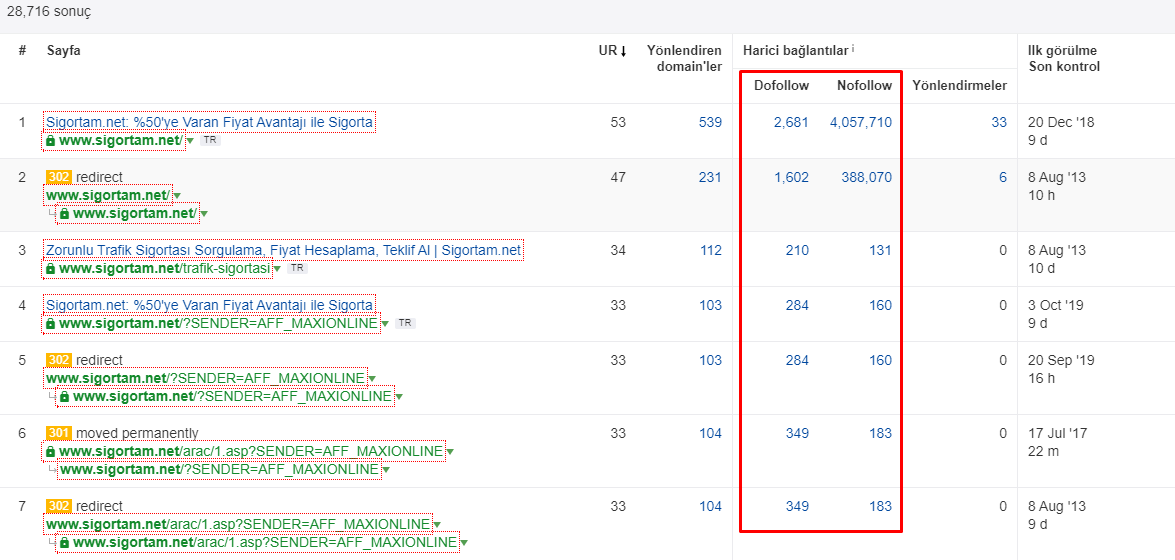
Do Nofollow Links Help for SEO?
Yes, Google is a Hypertextual Search Engine. That is, it discovers web pages through links. Can understand the subject and quality of a web page through links. Since Nofollow Attribute is now a hint, Googlebot may decide to follow a nofollowed link and include it in the ranking calculation. Also, it helps for diversifying the backlink profile of a website with a more natural distribution.
For the first time years ago, Matt Cutts had the following sentence on how nofollow can influence PageRank flow through links.
So what happens when you have a page with “ten PageRank points” and ten outgoing links, and five of those links are nofollowed? […] Originally, the five links without nofollow would have flowed two points of PageRank each […] More than a year ago, Google changed how the PageRank flows so that the five links without nofollow would flow one point of PageRank each.
Matt Cutts
Related Read Suggestion:
How to Audit and Behave Nofollow Links in terms of SEO?
Various Off-page SEO Audit tools such as SEMRush, Moz, Serpstat, SEO Power Suite can be used to see the distribution of nofollow and dofollow links that a website has. At the same time, the “Links” field owned by Google Search Console can be used to view domain names that generally refer to a website.
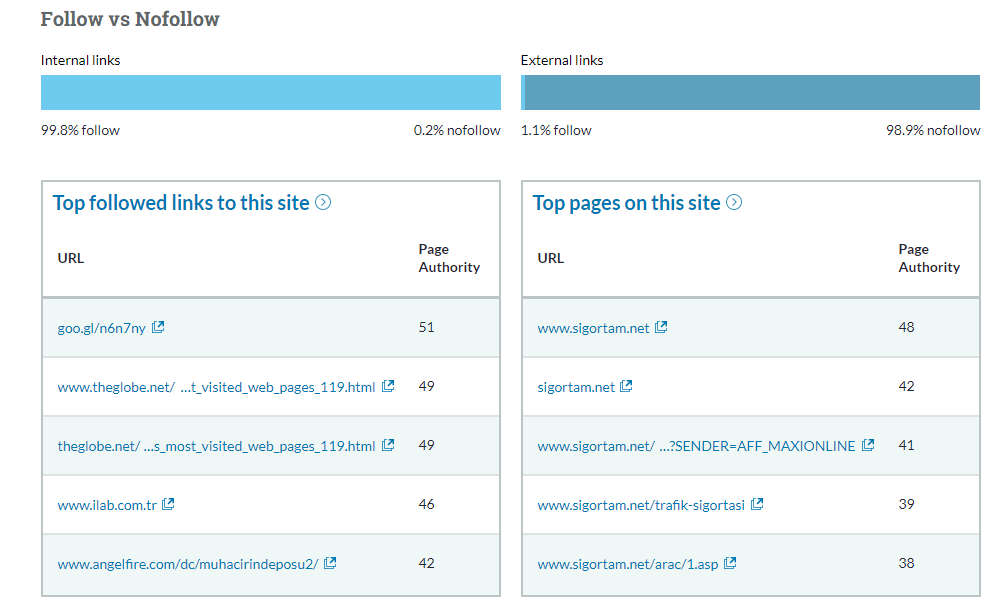
The issue of using Nofollow Links in SEO Projects can be realized with the fact that link gains are natural and referral from a related topic and a related web page. Therefore, dofollow links can always be more precise and important as they carry more PageRank and Reference value, but with Nofollow links, the link profile will have a more diverse, natural structure.
Since the topic of Backlink, Branding, and Off-Page SEO is largely included in BlackHat SEO and involves manipulating Search Engine Algorithms, no advice will be given about link building in this guideline.
In this context, you can see below how Google’s Matt Cutts defines the links.
People treat links as editorial votes. The link to something because it inspires passion in them. It’s something that’s interesting. They want to share it with friends. There’s some reason why they want to highlight that particular link.
Matt Cutts
In other words, to use Nofollow links in SEO Projects, try to be an inspiration, expert, authoritative and trustworthy source of service and information in your niche.
Are YouTube links nofollow?
Yes, links on the Youtube comments, channel, and video descriptions are nofollwed by Youtube. But, using these links can help the Youtube audience to get your related web pages within a context. Also, since the situation of the nofollow attribute has changed, these links might increase the crawl frequency or relevance for some terms in some cases, in the future.
Are Linkedin Links Nofollow?
No, Linkedin doesn’t use nofollow attributes for the outgoing links. Since, they generally use the “dofollow” policy for the outgoing links and the Linkedin is a social network, Google might not give much value or weight to these links. On the other hand, Linkedin uses “noreferrer, nopeeneer” attributes in the links of a Linkedin profile.
Are the Twitter Links Nofollow?
No, like Linkedin, Twitter doesn’t use nofollow attributes for the outgoing links but it doesn’t mean that these links are valuable references for the Search Engine. Since, the links on the social media accounts can be subjective and don’t reflect the expert opinion or express a valuable reference, in this case, to take an advantage of these types of links, a social media campaign and crowdsourcing can be useful.
Are Facebook Links Nofollow?
Yes, Facebook and also Instagram uses nofollow attribute for external outgoing links. Facebook also use a subdomain for tracking the external links such as “https://external.fsaw2-2.fna.fbcdn.net/”.
How do I add a nofollow to the Amazon affiliate link?
Google suggest using “sponsored” attribute with our without the nofollow attribute for the monetization links including Amazon affiliate links. To add a nofollow attribute to a link, you should use “edit as HTML” option from your content editor. By adding “rel=’nofollow, sponsored'” addon into the “a” tag of the link, you can nofollow any affiliate link.
Should internal links be nofollow?
No, you shouldn’t use nofollow for the internal links. If you don’t want Googlebot to follow the internal links, you should use “disallow” from the robots.txt file for those URLs. Using nofollow on internal links is not a valid practice for SEO. Search Engines take nofollow attribute into account only if they are being used for external links. And, some resources might say that you can optimize your crawl budget via using the nofollow attribute on internal links, unlike Google says. Also, nofollow links are being used for showing that the links on the web page are not being added by the author of the article or the owner of the service, if you use nofollow for your own links, it might create a mixed-signal for the Search Engine Algorithms in terms of the trust.
Below, you will find a quote from the Google Guidelines related to the Nofollow Usage on internal links.
If you need to prevent Google from following a link to a page on your own site, use the robots.txt Disallow rule. To prevent Google from indexing a page, allow crawling, and use the noindex robots rule.
Google Webmaster Guidelines
How to Check Nofollow URLs on a Web Site
For checking the nofollow URLs on a web site there are multiple ways.
1. Use Google Chrome DevTools for Checking the URL’s Nofollow Attribute
With Google Chrome DevTools, you can check a URL’s attributes from the After-DOM. To check Nofollow Links on a web page with Chrome DevTools, follow the instructions below.
- Press “ctrl + shift+ I” or F12 to open DevTools on Chrome.
- Use right-click on a link.
- Check the HTML Code in the Rendered DOM.
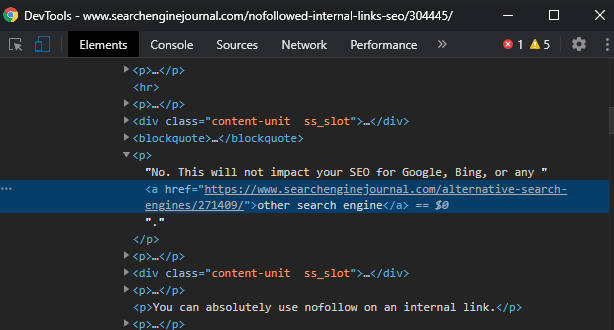
At below, you also can see a nofollow link example from Youtube.

2. Use Chrome and Firefox Extensions and Addons for Checking Nofollow Lİnks
To check and see the Nofollow URLs on a web page, we also can use modern browser extensions and addons such as “Nofollow”. It simply will mark all of the nofollowed links on a web page. You may see an example below.

To download the Nofollow Extension, you may click this link.
And also, if you downloaded the extension, you will see that the link above is being nofollowed.
3. Use SEO Crawlers for Checking the Nofollow URLs in a Website
SEO Crawlers and Tools such as OnCrawl, JetOctopus, Ahrefs, SEMRush, ScreamingFrog can be used for checking all external URLs and their nofollow attributes. Below, you will see a nofollowed and followed URL distribution for a web pages’ outgoing links from OnCrawl.
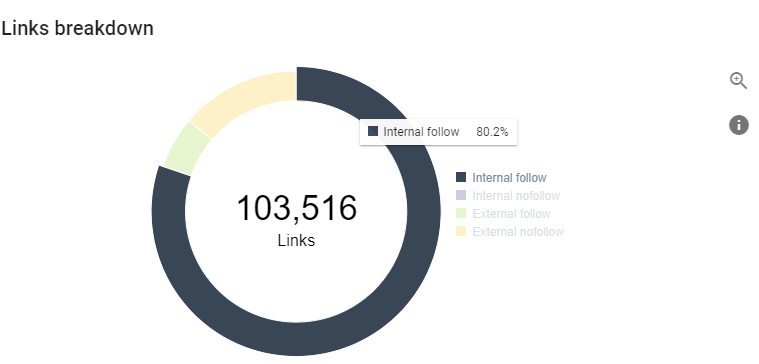
Another Insight from OnCrawl for the same task is below.
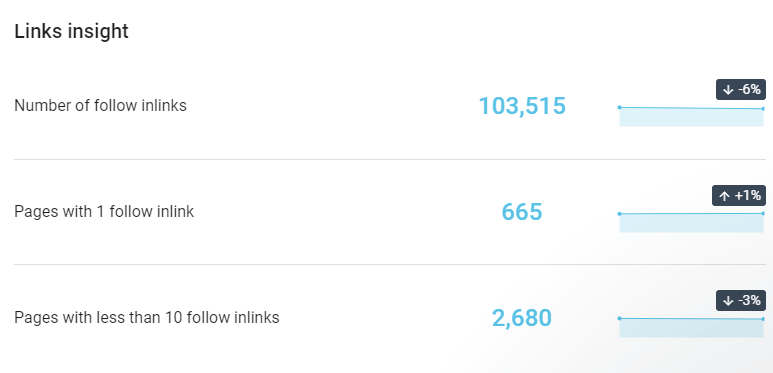
You also can use JetOctopus for the same task as below.
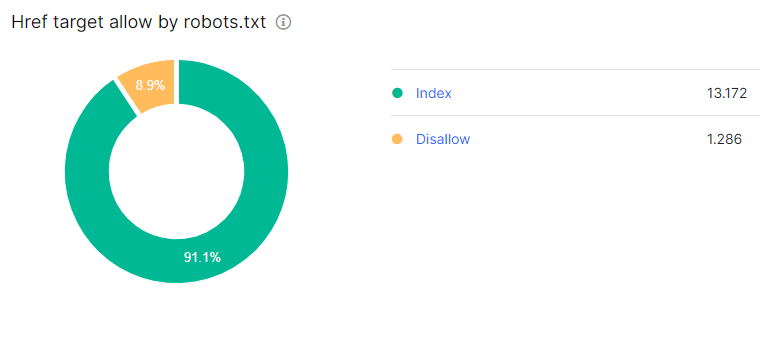
Above example shows the internal disallowed and indexable pages’ distribution for a crawl example.
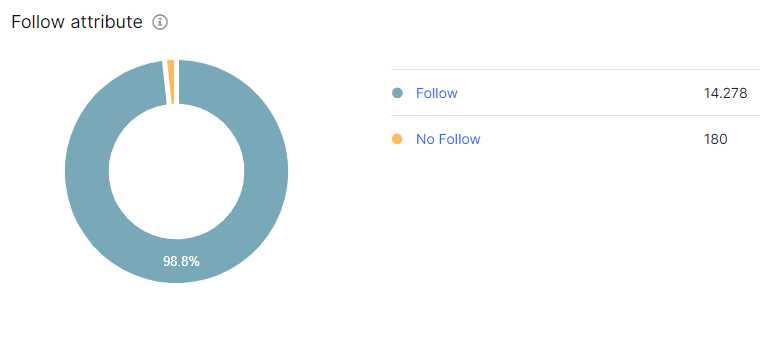
And this example above from JetOctopus shows the Internal Nofollow and Follow link distribution. A last example from JetOctopus is below for the external nofollow link distribution.
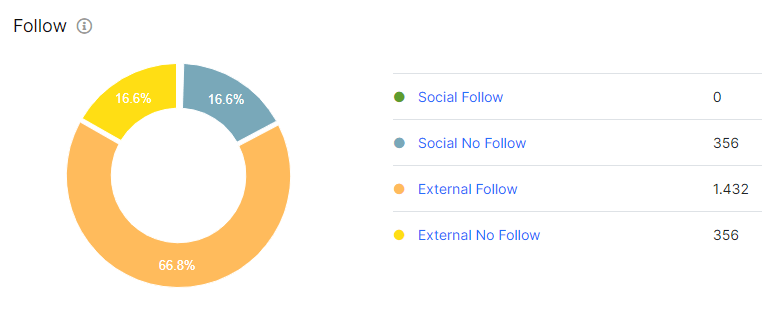
In terms of SEO, there are always more details, information and variations of different verticals for extracting insights. As a Holistic SEO Expert, I always recommend you to think best possible detailed way, because Search Engine encounters millions of different variated versions of the same situation. So, how many different angles you have for a given task, it will better for your SEO Project. Lastly, you can see same graph from Ahrefs as below.

The example above shows only the external outgoing links from a web site for the nofollow distribution of those links. You also can use Ahrefs Site Audit, SEMRush, and also Moz for the same task with different angles. I will add some of those in the future while refreshing this guideline.
4. Use Python and Scraping for Nofollowed External or Internal URLs Extracting
Also with Python’s Scrapy Module, the Nofollowed URLs from a web site can be extracted to a data frame. Maybe, we can create another post about this task, in the future.
Last Thoughts on Holistic SEO and Nofollowed Links
Most of the traditional SEOs don’t think that the basic elements of SEO do not matter so much. Nofollow attributes and the new “ugc” and “sponsored” attributes also are included in these ignored SEO elements most of the time. This happens because Google and other Search Engines do not like to talk about PageRank or non-UX and non-Content related objects in their algorithms such as PageRank. Also, there is not enough work and experiment for the Nofollow attributes and their effects on SEO. Most of the experiments and experiences related to the nofollow in SEO are personal and usually, it is not being shared. But, in some cases, we see that even the nofollow links might affect the crawl rate, keyword profile, and a web page’s SEO Performance in a “correlative way”. So, it is not the same thing with the “causation”. But still, these correlativity led SEOs to think that the nofollow attribute doesn’t work like the old times. Eventually, Google announced that they have changed the nofollow attribute’s situation. This shows us two things.
- Trusting a Search Engine’s official statements always can be misleading and also create a lack of information in terms of SEO.
- Not trusting a Search Engine’s official statements always can be misleading and also create a lack of information in terms of SEO.
So, a Holistic SEO should follow every angle, perspective, and scientific method with logic to figure out the best possible balance for an SEO Project with its own conditions and experiences.
Our nofollow guideline will be continued to improved by time.
- B2P Marketing: How it Works, Benefits, and Strategies - April 26, 2024
- SEO for Casino Websites: A SEO Case Study for the Bet and Gamble Industry - February 5, 2024
- Semantic HTML Elements and Tags - January 15, 2024
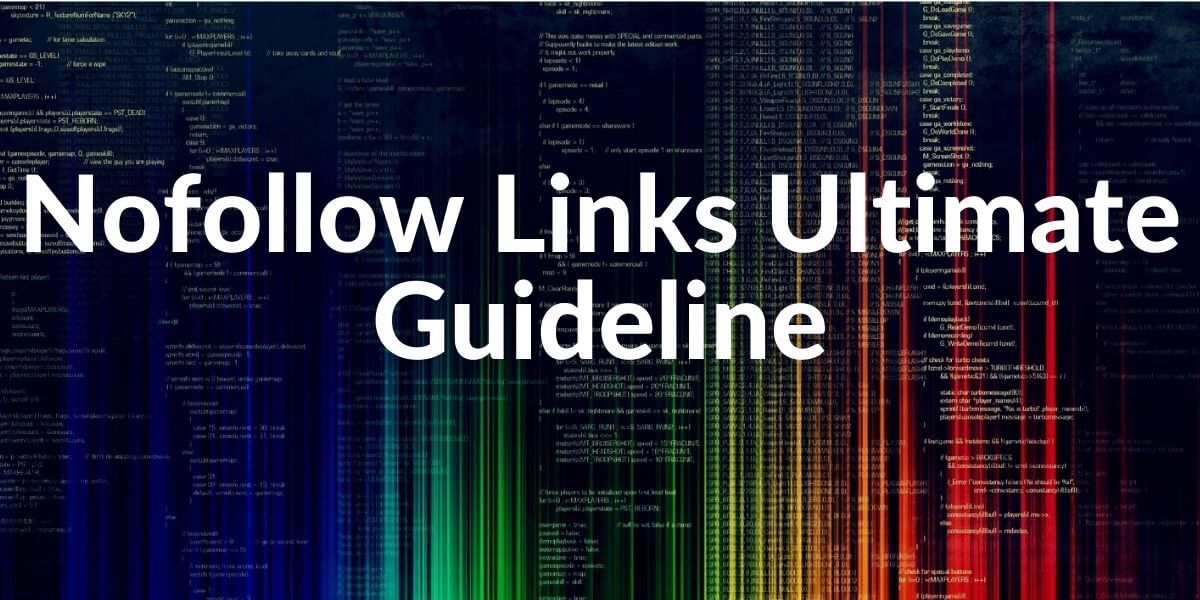
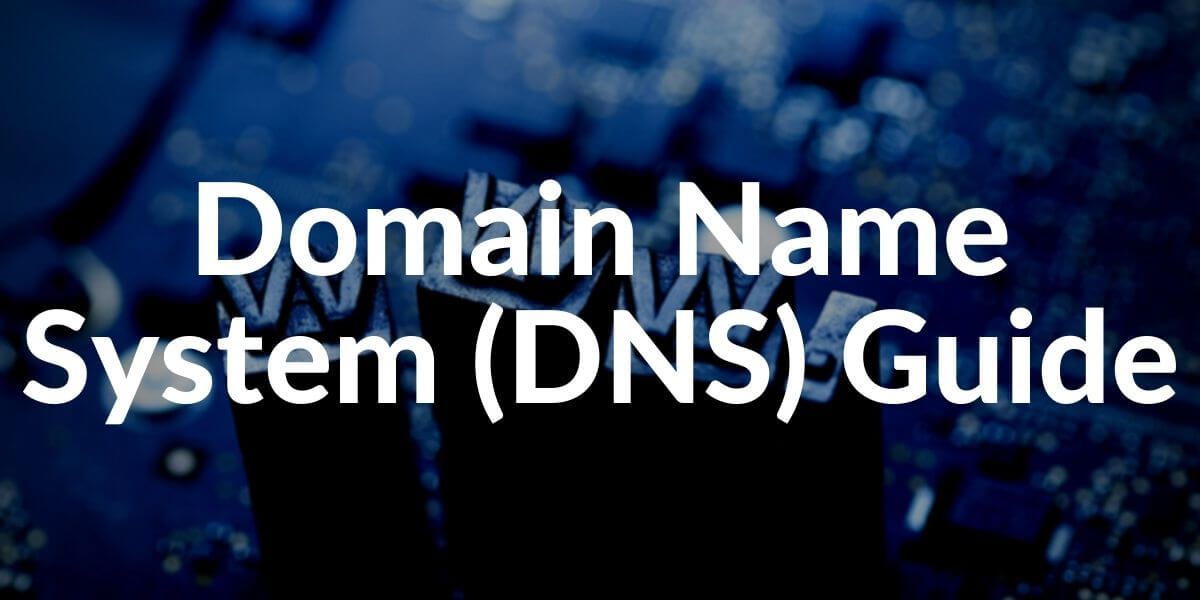
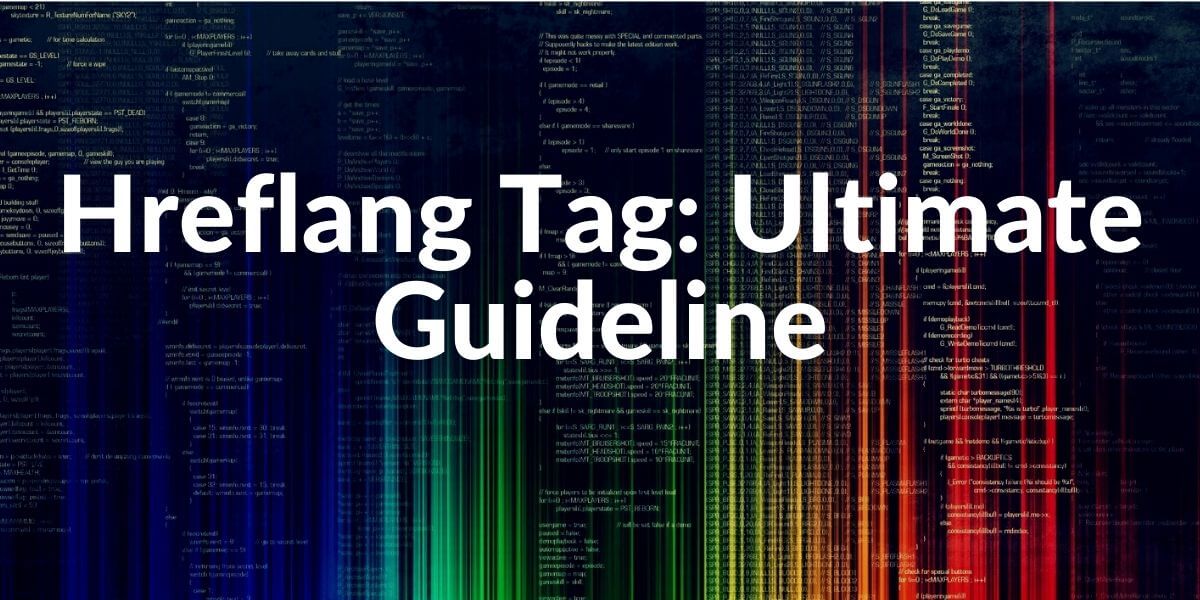
It is worth adding that the nofollow parameter was invented by Google. Same as the other parameters. Google creates increasingly worse search results based almost on the stores themselves and not on what you are looking for. It may be worth stopping using Google’s search engine and playing its arbitrary games when it comes to website ratings.